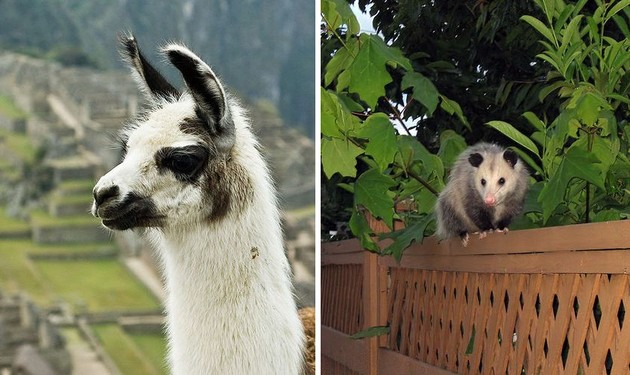
13 March 2017
What do llamas and opossums have in common?
Their ancestors swapped continents during the Great American Interchange. They now live a world away from their country of origin.
The “Great American Interchange” sounds like a flea market or a swap meet but it’s actually the movement of species between North and South America when the two continents joined at Panama three million years ago.
Before the interchange our continent had members of the camel family; South America did not. The camelids walked south and thrived on their new continent in the wild as guanacos and vicuñas and some even became domesticated — llamas and alpacas. In the meantime camels went extinct here in North America. So there are wild camels in Peru but we have none.
Other animals made the journey, too. Here are just a few of the northern species that became successful in South America: camelids, squirrels, cottontail rabbits, deer, wild horses, peccaries, otters, raccoons, wolves, cougars, American sparrows (Emberizidae), trogons and condors. Click here for the complete list.
Initially the interchange was symmetrical with the same number of species going north and south but the result was lopsided. More northern species survived their move to South America than did southern species transplanted to the north. This was due in part to the difficult trek northward (deserts en route), our less hospitable climate (winter!) and the long isolation of South American fauna.
Opossums were one of the few success stories. We had no marsupials in North America until the Virginia opossum’s ancestors made the journey and thrived on our continent. Many of their relatives still live in South America.
So what did we get when South American animals walked north? Not as much as you’d think: opossums, armadillos, porcupines, cougars, parrots, hummingbirds, tanagers, and tyrant flycatchers. Click here for the complete northbound list.
Cougars (Puma concolor) are on both lists because they were originally from North America and walked into South America. After they went extinct in North America the southern ones walked north to repopulate our continent.
We humans were part of the Great American Interchange, too. Our species’ movement around the globe was made possible by continental land bridges.
(photos from Wikimedia Commons: llama at Machu Picchu, Virginia opossum in western Canada. Click on each link to see the original.)
And again….I learn new things! Thank you, Kate for such an informative post. Have a great week!